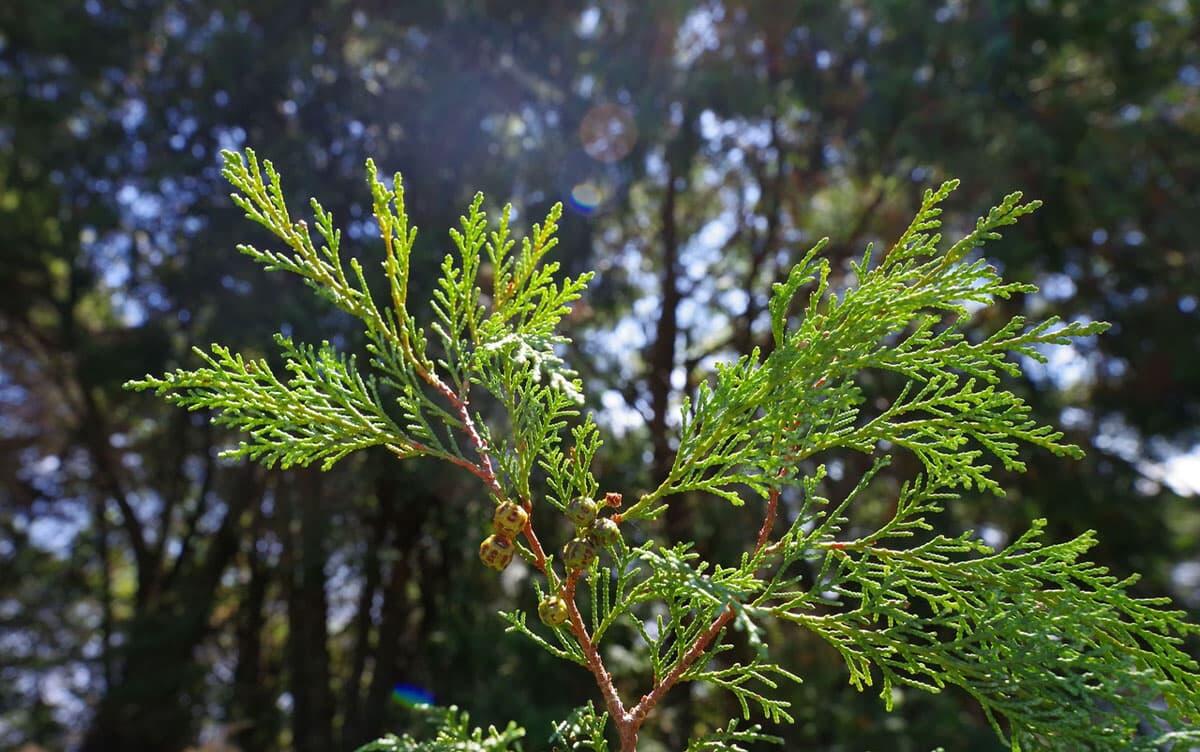Research News
Natural Japanese and Taiwanese Hinoki Cypresses Genetically Differentiated 1 Million Years Ago

Population genetic analysis conducted by researchers at University of Tsukuba have revealed that natural Japanese hinoki cypress (Chamaecyparis obtusa) and, its variety, Taiwanese hinoki cypress (C. obtuse var. formosana) diverged approximately 1 million years ago due to the geological separation of the Ryukyu Archipelago. The study also found that the Japanese variety has expanded over time, whereas the Taiwanese population has become fragmented and declined. Furthermore, the unique genetic characteristics of populations at the northern and southern distributional limits of Japan warrant high conservation priority.
Tsukuba, Japan—Hinoki cypress is a commercially vital species used as a high-quality building material, second only to sugi cedar in planted forest area and timber production in Japan. Natural hinoki cypress forests extend from Fukushima Prefecture in the north to Yakushima Island in the south. Taiwanese hinoki cypress is a variety and close relative of the Japanese hinoki, and its large-diameter timber was historically imported from Taiwan to Japan for constructing shrines and temples. By conducting a comprehensive population genetic analysis, this study aimed to elucidate genetic diversity, regional genetic structure, and evolutionary history across the entire natural distribution range of both species.
The results revealed clear genetic differentiation between Japanese and Taiwanese hinoki cypress, with divergence estimated to have occurred approximately 1 million years ago during the early Pleistocene epoch. The Ryukyu Arc, a chain of islands stretching from Southern Kyushu, Japan, to Taiwan, was once connected by a land bridge. Its eventual breakup led to geographic isolation between the two species. The study also indicates that Japanese hinoki is better adapted to warm, rainy summers, while Taiwanese hinoki cypress is suited to cold, rainy winters. Within Japan, genetic differences were observed among populations in Yakushima, central and western Honshu, and central and northern Honshu, with a generally increasing trend in population sizes. Populations at the northern (Fukushima) and southern (Yakushima) limits exhibited highly distinctive genetic characteristics, making them high-priority targets for conservation. On the other hand, in Taiwan, populations showed no clear geographic patterns of genetic differentiation and were estimated to be fragmented and declining.
The movement of Japanese hinoki cypress seedlings is currently regulated under the Forestry Seeds and Seedlings Transfer Act, which divides populations into three categories based primarily on climatic differences. However, the findings of this study signifiy the need for a revised classification system based on genetic regional characteristics. Outbreeding depression resulting from interbreeding between genetically distinct groups adapted to local environments may lead to reduced environmental adaptability. Therefore, conservation of natural forests as genetic resources requires careful management of seedling transfer to preserve local genetic integrity.
###
This work was supported by Japanese Society for the Promotion of Science KAKENHI (Grant 23H00337 and 24H00055).
Original Paper
- Title of original paper:
- The historical biogeography of divergence in the relict cypress Chamaecyparis obtusa, and the implications for conservation and management in East Asia
- Journal:
- Ecology and Evolution
- DOI:
- 10.1002/ece3.72240
Correspondence
Researcher AIHARA Takaki
Professor Emeritus TSUMURA Yoshihiko
Institute of Life and Environmental Sciences, University of Tsukuba
Related Link
Institute of Life and Environmental Sciences



